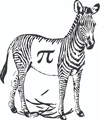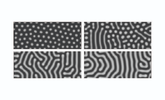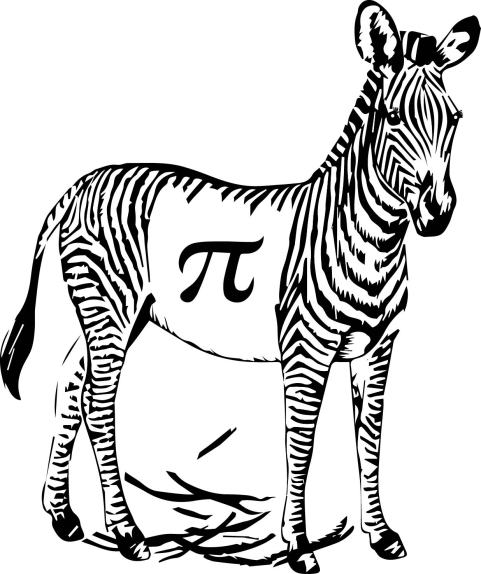- Messages
- 12,453
Happy Pi Day everyone!
Every March 14th, mathematical scientists like me are commissioned to write articles about the ancient and mysterious number: Pi. It is denoted by the Greek letter “π” and used in mathematics to represent a constant, approximately equal to 3.14159. Pi was originally discovered as the constant equal to the ratio of the circumference of a circle to its diameter. The number has been calculated to over one trillion digits beyond its decimal point. Calculations can continue infinitely without repetition or pattern, because Pi is an irrational number. Mathematicians called it irrational, because Pi cannot be expressed as a ratio of integers.
To children and adults alike, Pi is perplexing… a constant with an infinity number of digits and no pattern. We all learn about Pi in geometry class at high school. However, Pi doesn’t seem to have a practical utility outside of the world of geometry. So why does Pi - a geometrical constant - deserve a celebration? If we celebrate Pi, why don’t we celebrate any other number? Well, Pi is different from all other numbers. It is a universal constant encoded in most processes occurring in the universe, including those in the life sciences!
Now you are probably wondering how Pi appears in biological processes. The answer to this question lies in the interdisciplinary field of biophysics: biology + physics. Biology studies life and living organisms. Biologists investigate how organisms grow, get food, communicate, sense and response to the environment, reproduce, and evolve. On the other hand, physics studies the nature and properties of matter and energy. Physicists search for the mathematical laws of nature and the universe. Biophysicists look for patterns in life and analyze them with mathematics to gain novel insights about how organisms work.
Let’s now consider one of the patterns observed in the life sciences. The appearance of an organism’s body plan – a process called morphogenesis – is one of the most striking features of living creatures. In animals, the embryo grows from an almost uniform group of cells into a patterned structure with a brain, backbone, and limbs. In 1952, the mathematician and father of computer science, Alan Turing, proposed a mathematical model describing the simple biophysical principles of pattern formation during morphogenesis. He proposed that an embryo becomes patterned into different anatomical features by chemicals (termed morphogens by Turing), which diffuse through tissues. In the simplest case, the formation of the pattern results from the reaction of two morphogens, an activator and inhibitor. The activator self-amplifies and can only diffuse locally. It also stimulates the growth of the inhibitor which, in turn, suppresses the activator, and diffuses long distances. Mathematical analysis and computer simulations of this seemingly simple system reveal that Turing’s model produces a bewildering array of patterns, including spots and stripes. The activator morphogen forms local patches of spots or stripes, while the inhibitor prevents the patches growing too close to each other. Turing’s model is supported by experimental evidence as one of the candidate mechanisms driving the formation of patterns during the growth of organisms. In fact, it can explain the formation of stripes and spots in animal fur coats, pigmented markings in tissues, limb structure and the development of the small finger-like protrusions in the animal gut which significantly increase the intestinal surface area used to absorb food.

How does Pi, the number with no pattern, play a role in the formation of pattern? Close your eyes, and imagine the stripes of a zebra. Those stripes have a size and spacing that is encoded by a constant: Pi! The same goes for the spots of a leopard. In fact, it seems that Pi encodes the size and spacing of many patterns, not confined to the field of biology.

Computer simulations of Turing's model produces a bewildering array of patterns, including spots and stripes.[/caption] Pi is also intimately woven into periodic processes. It appears in the governing biophysical laws of cell division timing, heart beats, breathing cycle, and circadian rhythms controlling sleep-wake cycles. However, this is another interesting and exciting topic at the interface between physics and biology, which we will need to leave for next year. You’ll just have to wait π x107 seconds!
Source:

Every March 14th, mathematical scientists like me are commissioned to write articles about the ancient and mysterious number: Pi. It is denoted by the Greek letter “π” and used in mathematics to represent a constant, approximately equal to 3.14159. Pi was originally discovered as the constant equal to the ratio of the circumference of a circle to its diameter. The number has been calculated to over one trillion digits beyond its decimal point. Calculations can continue infinitely without repetition or pattern, because Pi is an irrational number. Mathematicians called it irrational, because Pi cannot be expressed as a ratio of integers.
To children and adults alike, Pi is perplexing… a constant with an infinity number of digits and no pattern. We all learn about Pi in geometry class at high school. However, Pi doesn’t seem to have a practical utility outside of the world of geometry. So why does Pi - a geometrical constant - deserve a celebration? If we celebrate Pi, why don’t we celebrate any other number? Well, Pi is different from all other numbers. It is a universal constant encoded in most processes occurring in the universe, including those in the life sciences!
Now you are probably wondering how Pi appears in biological processes. The answer to this question lies in the interdisciplinary field of biophysics: biology + physics. Biology studies life and living organisms. Biologists investigate how organisms grow, get food, communicate, sense and response to the environment, reproduce, and evolve. On the other hand, physics studies the nature and properties of matter and energy. Physicists search for the mathematical laws of nature and the universe. Biophysicists look for patterns in life and analyze them with mathematics to gain novel insights about how organisms work.
Let’s now consider one of the patterns observed in the life sciences. The appearance of an organism’s body plan – a process called morphogenesis – is one of the most striking features of living creatures. In animals, the embryo grows from an almost uniform group of cells into a patterned structure with a brain, backbone, and limbs. In 1952, the mathematician and father of computer science, Alan Turing, proposed a mathematical model describing the simple biophysical principles of pattern formation during morphogenesis. He proposed that an embryo becomes patterned into different anatomical features by chemicals (termed morphogens by Turing), which diffuse through tissues. In the simplest case, the formation of the pattern results from the reaction of two morphogens, an activator and inhibitor. The activator self-amplifies and can only diffuse locally. It also stimulates the growth of the inhibitor which, in turn, suppresses the activator, and diffuses long distances. Mathematical analysis and computer simulations of this seemingly simple system reveal that Turing’s model produces a bewildering array of patterns, including spots and stripes. The activator morphogen forms local patches of spots or stripes, while the inhibitor prevents the patches growing too close to each other. Turing’s model is supported by experimental evidence as one of the candidate mechanisms driving the formation of patterns during the growth of organisms. In fact, it can explain the formation of stripes and spots in animal fur coats, pigmented markings in tissues, limb structure and the development of the small finger-like protrusions in the animal gut which significantly increase the intestinal surface area used to absorb food.

How does Pi, the number with no pattern, play a role in the formation of pattern? Close your eyes, and imagine the stripes of a zebra. Those stripes have a size and spacing that is encoded by a constant: Pi! The same goes for the spots of a leopard. In fact, it seems that Pi encodes the size and spacing of many patterns, not confined to the field of biology.

Computer simulations of Turing's model produces a bewildering array of patterns, including spots and stripes.[/caption] Pi is also intimately woven into periodic processes. It appears in the governing biophysical laws of cell division timing, heart beats, breathing cycle, and circadian rhythms controlling sleep-wake cycles. However, this is another interesting and exciting topic at the interface between physics and biology, which we will need to leave for next year. You’ll just have to wait π x107 seconds!
Source:

Pi Is Encoded in the Patterns of Life
-By Santiago Schnell Every March 14th, mathematical scientists like me are commissioned to write articles about the ancient and mysterious number: Pi. It is denoted by the Greek letter “π” and used in mathematics to represent a constant, approximately equal to 3.14159. Pi was originally...
www.biophysics.org
